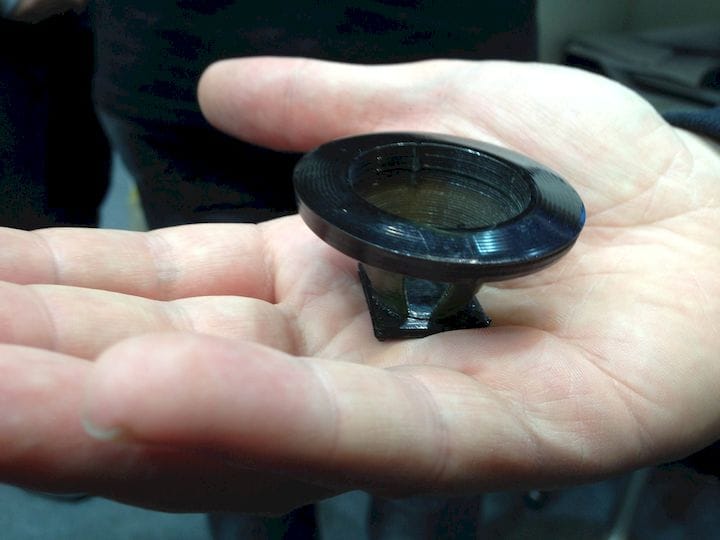![The first 3D print from 3D Systems [Source: Fabbaloo]](https://fabbaloo.com/wp-content/uploads/2020/05/image-asset_img_5eb0a41440b00.jpg)
Since we published a story about the invention of 3D printing a few weeks ago, we have had much feedback.
The gist of the story is that the common knowledge of those in the 3D printing industry is that 3D printing was invented first in SLA form by Charles Hull, later of 3D Systems, and then in FDM / plastic extrusion form by Scott Crump, later of Stratasys.
Those two inventors parlayed their creations into the two industry giants we see today. They’ve been very successful and have literally revolutionized the world through their companies’ work and those by companies inspired by their success.
But did they really invent 3D printing?
Our first story talked about a fellow named Bill Masters who seems to have invented a form of 3D printing involving “spitting wads” of material at a target to gradually accumulate into a complete object. Through a series of challenges, Masters eventually gave up on the concept, leaving the future of 3D printing for others – namely Crump and Hull – to pursue.
Then it was pointed out that three inventors in France, Alain Le Méhauté, Olivier de Witte and Jean Claude André, came up with the idea slightly before Hull filed his patent in the USA.
Their machine description seems very similar to the SLA process, and might have worked. However, due to patent, corporate and financial reasons they could not pursue the idea in force, again leaving the field to Stratasys and 3D Systems.
Then – again – it was pointed out that yet another inventor came up with the idea of 3D printing even earlier, this time in Japan. A long post on 3D print history from Sculpteo explained that one Dr. Hideo Kodoma from the Nagoya Municipal Research Industrial Institute created the concept in May of 1980, well before Hull, Crump and the French team. They wrote:
“Japanese Doctor Hideo Kodama of Nagoya Municipal Industrial Research Institute was among the first to invent a single-beam laser curing approach.
He applied for a patent for his rapid prototyping system in Japan, in May 1980. He described his system as follow: a vat of photopolymer material is exposed to a UV light that hardens the part and builds up the model in layers. Unfortunately, because of a funding issue, the full patent specification was not filled within the one-year deadline after application.”
Is this the true first invention of 3D printing?
No.
We found more evidence of yet earlier experiments. According to 3D print grandmaster consultant Terry Wohlers in his 2005 annual report (PDF):
“The first attempt to create solid objects using photopolymers using a laser took place in the late 1960s at Battelle Memorial Institute. The experiment involved intersecting two laser beams of differing wave length in the middle of a vat of resin, attempting to polymerize (solidify) the material at the point of intersection. The photopolymer resin used in the process was invented in the 1950s by DuPont.”
Wohlers goes on to explain several other false starts to 3D printing, including one from a Danish group in 1967, a laser approach in the early 1970s and a “solid photography” experiment and patent in the late 1970s.
There are two conclusions here:
First, Hull and Crump are most definitely not the first inventors of 3D printing. There is ample evidence of many others coming up with similar or related processes earlier, even decades earlier in some cases.
Secondly, all of these prior attempts failed in one way or another. The ideas they had might have been good, or they might have been bad, but even if good they would have had to execute them properly in the market. They did not.
The key difference between them and Stratasys and 3D Systems is that the latter two companies were able to find a way to leverage a technical idea into a viable business, and to market and produce machines, supplies and services in a way that business customers accepted.
Bottom line: good ideas are common and not worth much unless you actually can execute based on them.











MakerBot’s new Classroom product is set to shake up the education market for 3D printing significantly due to its features, price and most importantly, how it was designed and implemented.